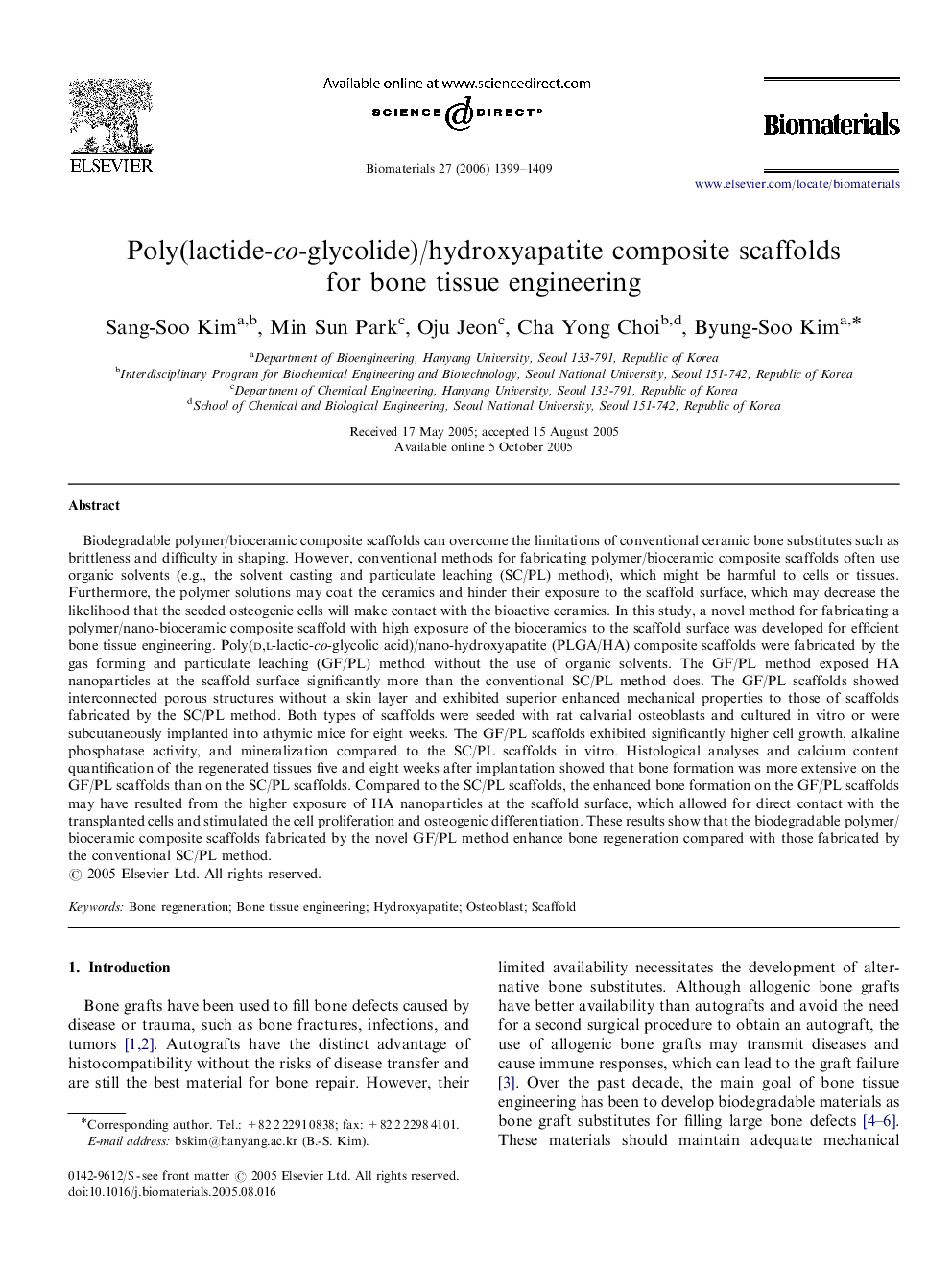| کد مقاله | کد نشریه | سال انتشار | مقاله انگلیسی | نسخه تمام متن |
|---|---|---|---|---|
| 11549 | 747 | 2006 | 11 صفحه PDF | دانلود رایگان |

Biodegradable polymer/bioceramic composite scaffolds can overcome the limitations of conventional ceramic bone substitutes such as brittleness and difficulty in shaping. However, conventional methods for fabricating polymer/bioceramic composite scaffolds often use organic solvents (e.g., the solvent casting and particulate leaching (SC/PL) method), which might be harmful to cells or tissues. Furthermore, the polymer solutions may coat the ceramics and hinder their exposure to the scaffold surface, which may decrease the likelihood that the seeded osteogenic cells will make contact with the bioactive ceramics. In this study, a novel method for fabricating a polymer/nano-bioceramic composite scaffold with high exposure of the bioceramics to the scaffold surface was developed for efficient bone tissue engineering. Poly(d,l-lactic-co-glycolic acid)/nano-hydroxyapatite (PLGA/HA) composite scaffolds were fabricated by the gas forming and particulate leaching (GF/PL) method without the use of organic solvents. The GF/PL method exposed HA nanoparticles at the scaffold surface significantly more than the conventional SC/PL method does. The GF/PL scaffolds showed interconnected porous structures without a skin layer and exhibited superior enhanced mechanical properties to those of scaffolds fabricated by the SC/PL method. Both types of scaffolds were seeded with rat calvarial osteoblasts and cultured in vitro or were subcutaneously implanted into athymic mice for eight weeks. The GF/PL scaffolds exhibited significantly higher cell growth, alkaline phosphatase activity, and mineralization compared to the SC/PL scaffolds in vitro. Histological analyses and calcium content quantification of the regenerated tissues five and eight weeks after implantation showed that bone formation was more extensive on the GF/PL scaffolds than on the SC/PL scaffolds. Compared to the SC/PL scaffolds, the enhanced bone formation on the GF/PL scaffolds may have resulted from the higher exposure of HA nanoparticles at the scaffold surface, which allowed for direct contact with the transplanted cells and stimulated the cell proliferation and osteogenic differentiation. These results show that the biodegradable polymer/bioceramic composite scaffolds fabricated by the novel GF/PL method enhance bone regeneration compared with those fabricated by the conventional SC/PL method.
Journal: Biomaterials - Volume 27, Issue 8, March 2006, Pages 1399–1409